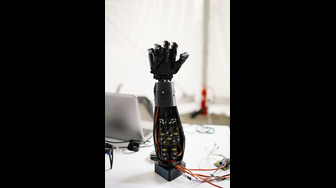In the age of automation and robotics, industries are increasingly relying on advanced systems to streamline operations, enhance productivity, and reduce human error.
In the age of automation and robotics, industries are increasingly relying on advanced systems to streamline operations, enhance productivity, and reduce human error.
The importance of wiring harnesses in automation and robotics cannot be overstated, as they provide the electrical connections necessary to power, control, and synchronize various mechanical and electronic components.
In this blog post, we will explore the role of automation and robotics wiring harnesses, their components, and why they are essential to the seamless operation of robotic systems.
What is an Automotive Wiring Harness?
A wiring harness is a complex system of electrical wires, connectors, and terminals that are bundled together to transmit electrical power and signals throughout a vehicle. This essential component ensures the proper functioning of various electrical systems, from lights and power windows to more advanced systems like battery management and regenerative braking. Essentially, the wiring harness serves as the “nervous system” of the vehicle, allowing all electronic components to communicate and operate seamlessly.
What Is a Wiring Harness?
A wiring harness is a collection of wires, connectors, terminals, and other components that are bundled together to deliver electrical power and signals to different parts of a machine or system. They are often referred to as the nervous system of the machine, connecting various sensors, motors, control units, and other parts. In the context of automation and robotics, wiring harnesses are designed to withstand challenging environments and ensure uninterrupted operation.
What Is a Wiring Harness?
Robots, whether used in manufacturing, healthcare, or logistics, rely on a complex array of sensors, actuators, motors, and controllers to function. Wiring harnesses are critical in ensuring all these components are interconnected correctly. Here are some key functions of wiring harnesses in automation and robotics:
1. Power Distribution:
Robotics systems need precise power delivery to their motors, actuators, and other electronic components. A wiring harness ensures that the right amount of power is delivered to each part of the system, preventing energy wastage and optimizing performance.
2. Signal Transmission:
In robotics, signals are constantly being transmitted between sensors, controllers, and motors to relay data and adjust actions in real-time. The wiring harness facilitates this continuous flow of information, which is crucial for maintaining the robot's agility and accuracy.
3. Space Efficiency:
Modern robots are designed to be compact and efficient. Wiring harnesses are essential in optimizing space, as they neatly organize wires and cables to minimize clutter, improve airflow, and reduce the risk of electrical shorts or damage from loose cables.
4. Safety and Reliability:
Automated systems are often deployed in critical and hazardous environments. Wiring harnesses are designed with insulation and protection to prevent electrical failures, short circuits, or accidents. This ensures that the robots perform reliably in environments with extreme temperatures, moisture, and other potential hazards.
5. Ease of Maintenance:
The complexity of robotic systems can make maintenance challenging. Wiring harnesses, however, simplify repairs by offering easy access to specific components. If a problem occurs, technicians can quickly diagnose the issue and replace faulty parts, reducing downtime and improving operational efficiency.
Types of Wiring Harnesses for Robotics and Automation
The design and complexity of a wiring harness can vary depending on the specific needs of the robotics or automation system. Some common types of wiring harnesses used in this industry include:
1. Custom Wiring Harnesses:
Tailored to meet the unique requirements of a specific robotic system, custom wiring harnesses are designed to ensure optimal performance in the target application. These harnesses take into account the system's electrical load, environmental conditions, and specific cable routing needs.
2. Multi-Core Wiring Harnesses:
These harnesses contain multiple wires bundled together in a single sheath. They are commonly used when various signals and power lines need to be delivered to different parts of the robot from a central location. Multi-core harnesses simplify the wiring process and help reduce the risk of wiring errors.
3. Flexible Wiring Harnesses:
Robotics systems often have parts that move or rotate, such as robotic arms or conveyor belts. Flexible wiring harnesses are used in such systems to allow cables to bend and flex without breaking or getting damaged.
4. Heavy Duty Wiring Harnesses:
For robots operating in industrial environments, heavy-duty wiring harnesses are required. These are designed to handle high current loads, extreme temperatures, and exposure to corrosive substances.
Advantages of Using Wiring Harnesses in Robotics and Automation
Wiring harnesses are not just essential for functionality, but they also offer several benefits to businesses and manufacturers that rely on automation and robotics.
• Reduced Downtime:
By ensuring robots and automation systems function smoothly, wiring harnesses contribute to faster production times and higher overall efficiency in manufacturing processes.
• Cost-Efficiency:
Although designing and manufacturing wiring harnesses may involve upfront costs, the long-term benefits, such as reduced maintenance costs and extended equipment life, make them a cost-effective solution for automation systems.
• Increased Productivity:
By ensuring robots and automation systems function smoothly, wiring harnesses contribute to faster production times and higher overall efficiency in manufacturing processes.
Wiring harnesses are the unsung heroes of modern robotics and automation. While they may not be the most glamorous components of a robotic system, they play a crucial role in ensuring the system’s reliability, safety, and efficiency.
Whether you are designing a robot for an industrial application or integrating an automation system into your manufacturing process, investing in high-quality, well-designed wiring harnesses is essential for achieving optimal performance.
Shreeniwas Equipment Pvt Ltd. has been a trusted provider of premium wiring harness solutions, offering customized products that meet the specific needs of various automation and robotics systems.
As automation continues to shape the future of manufacturing, the role of wiring harnesses will only grow more important, ensuring that machines, systems, and robots can operate smoothly, safely, and efficiently.



